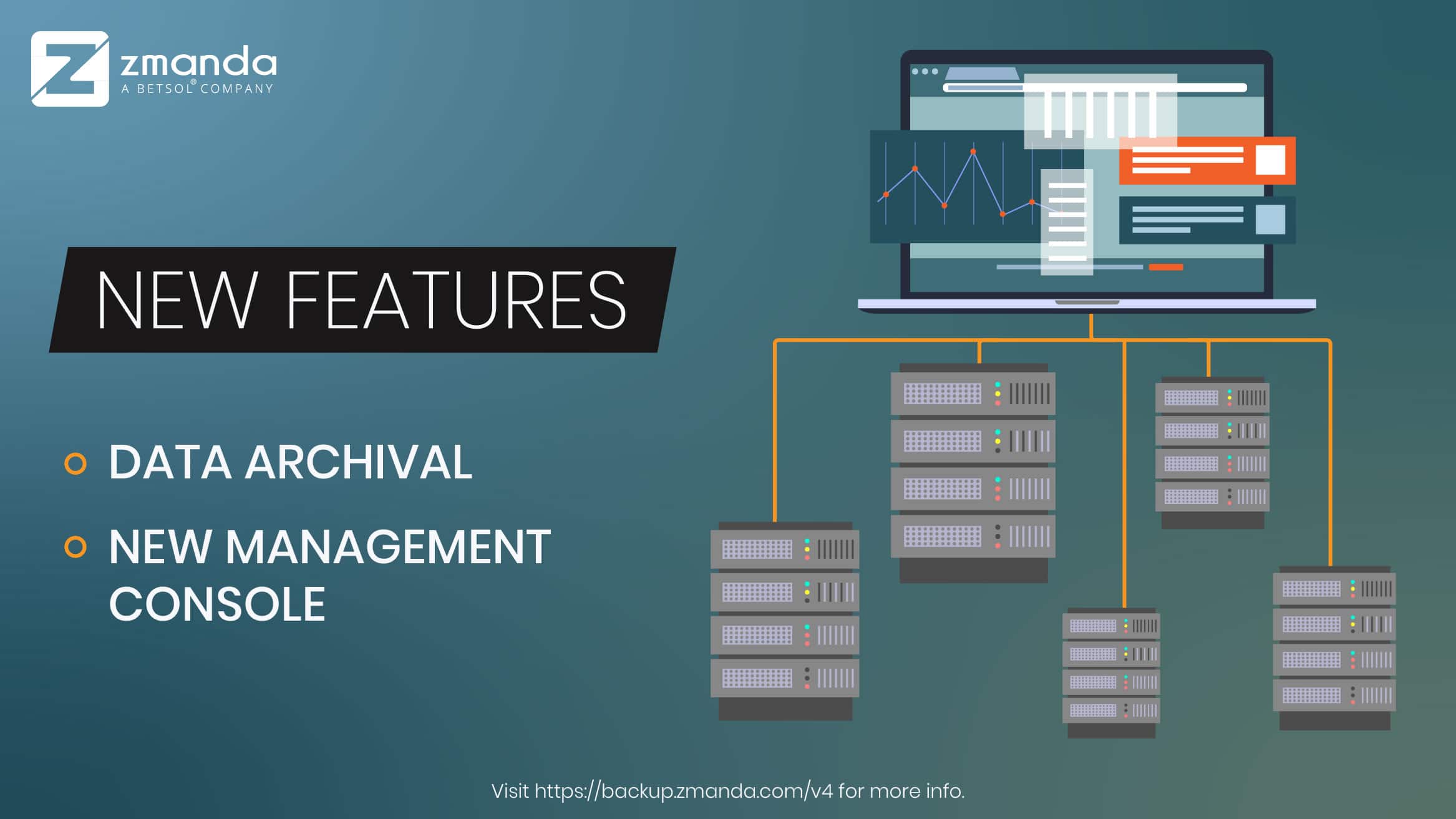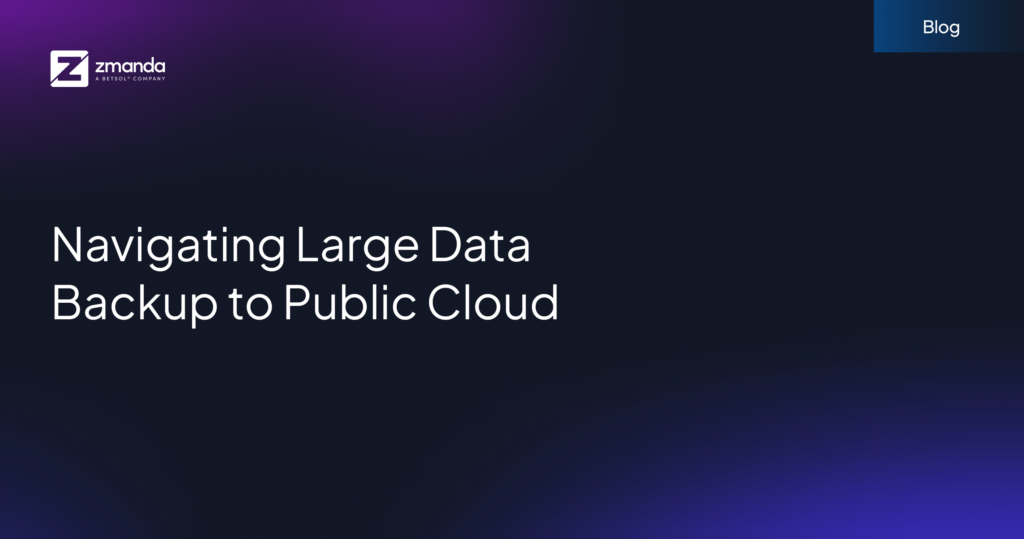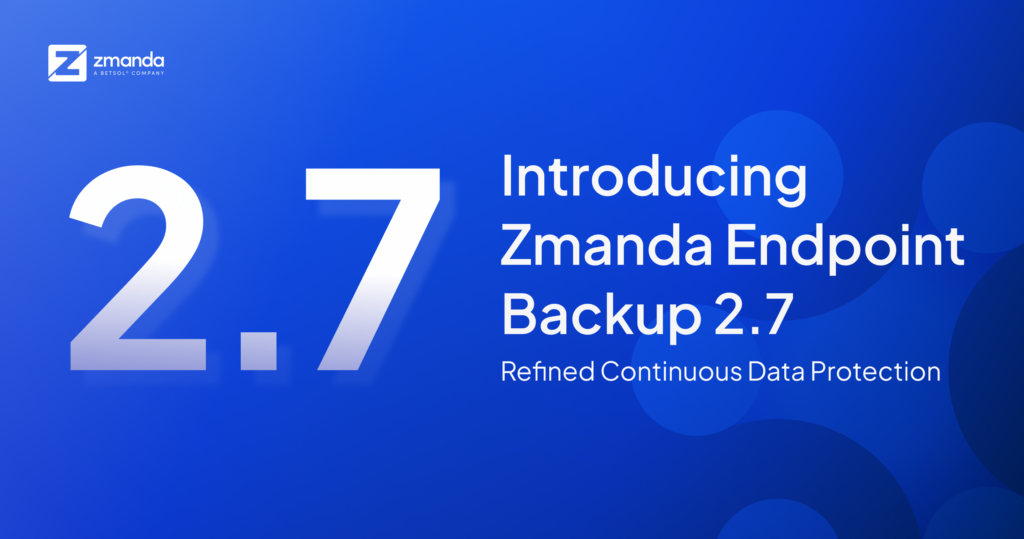
Part one of a series of blogs to highlight the new features that are coming to Zmanda 4.0. The new software update is coming soon and here are some of the features that are coming along with it.
Central Management Console for Managing Multiple Backup Servers
A central management console helps deploy backup tasks to multiple terminal machines from a single console while running and monitoring backups on all systems easily.
Backups Can Be Overwhelming If You Don’t Have the Right Tools
Managing backups of hundreds of machines across multiple locations is a tedious and time-consuming task, even for the most experienced IT administrators. This normally involves managing multiple backup servers and data storage systems. Maintaining consistent rules, schedules, and notifications across multiple backup servers is not only time-consuming but also repetitive.
How Does Amanda Enterprise 4.0 Fix This Problem?
IT teams are looking for tools to help take away monotonous tasks and simplify workflows. By consolidating the management console, Amanda Enterprise 4.0 will help save time and resources.
What are the Benefits?
- License deployment, configuration, and ongoing management of all backup servers across multiple locations can be done via a centralized management console
- Share backup rules across all the backups and backup sets
- Configure alerts and notifications for all backups from a single portal
- Monitor and manage the health of all the backups, traffic utilization and detailed reports all from a single pane
Also, be sure to check out Rutgers Case Study: How the University Saved Tens of Thousands of Dollars
Data Archival Rules
What is Data Archival?
As the business grows, the amount of data also grows exponentially over time. Additionally, when new functionalities are introduced, like when a software upgrades to a newer version or when mergers and acquisitions happen databases expand. The system becomes redundant and backing up all the data becomes a mandate. Thus, large volumes of data result in the need for additional hardware, slowing down of systems and extra time required to restore a critical backup.
So what is the best solution? Data archival and retrieval solutions is a great first step. It automatically helps prepare responses to any compliance audit, litigation or information request for business communication data. In addition, the right data archival solution archives all communication data in one central location for easy search, and exporting needs. Master and reference data, all transactional data, as well as metadata is stored. In short, the process of moving data that is no longer actively used to a separate storage device for long-term retention is termed as data archival.
Why is Data Archival Important?
With your business growth, your data grows and so does the importance of data archival. Even defining what data archival means can be difficult to organizations as they struggle to define what data can be archived. It’s important to understand the archival process to reduce your storage costs, especially in the cloud storage era.
Types of Storage:
- Primary Storage – Frequently Accessed and Highly Available Storage Options which are more expensive and designed for performance.
- Archive Storage – Long term storage options that are less frequently accessed and less expensive compared to primary storage.
What Data Should I Archive?
You need to make it a high business priority to identify what data to archive. Any data that is no longer frequently accessed off primary storage can be moved to archive storage. The objective is to retain the data for long term, but business is tolerant to longer data retrieval times.
How Does Amanda Enterprise 4.0 Help?
Zmanda 4.0 will provide data lifecycle rules to move your data from primary storage options to archive storage options. In other words, you can define when to move your data to be archived and to where.
- Cost Savings – As data grows, archiving it can save significant storage costs.
- Reduced Primary Storage Capacity – Archiving reduces the amount of data getting backed up to primary storage increasing the performance of backup and recovery tasks.
- Policy-Driven – Automatically move the data to archival storage beyond its retention period in primary storage.
What Comes Next for Zmanda 4.0?
Subscribe and get real-time updates on new features and offers sent directly to your email. New release updates sent directly to your email. Also, visit backup.zmanda.com/v4 to learn more about the new features that are coming with 4.0.
backup.zmanda.com/v4(opens in a new tab)



